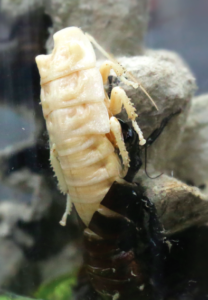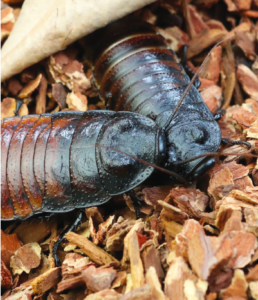Have you ever imagined having a pet roach? Not all roaches are like the pest roaches usually found at home. There are also roaches that are likable and can be kept as very entertaining pets, such as the hissers of Madagascar.There are three popular species of hissers in the roach hobby, which are mainly the Madagascar Giant Hissers, Halloween Hissers, and the Dwarf Hissers. These roaches are safe to handle, even for kids, since they generally do not bite.
What is that sound? Does it mean danger for me?
Other insects produce sound by rubbing their legs or wings. The sound of a hissing cockroach is produced when the insect forces air through the spiracles found on their thorax and abdomen, and this sets the hissing roaches apart from other insects. Although other roach species can make a similar noise when expelling a defense odor when threatened, the hissing cockroach produces only the noise itself without other odors for defense.
Housing and Husbandry
The hissers can easily be kept in a terrarium with enough space and hiding places for each individual roach. These three hissing roach species can be kept together in one terrarium for they do not breed with a different species even when they are together. The only thing that should be kept in mind with a mixed species communal setup is that the amount of space, food, and water each roach has within the terrarium.Keepers of hissers should also be mindful of the number of males of similar species; since males are more territorial, they will fight rival males to the death if there is a lack of females of the same species.

These fights can be prevented by isolating excess males or introducing more females to the colony. Roaches prefer the dark, but some are also active during the day; thus, egg trays, driftwood, bark, and artificial caves can be used to make this species more comfortable in their terrariums.An optional substrate of coco peat is also advisable for a keeper’s viewing pleasure; since hissers usually thrive on forest floors or under forest debris, this can replicate their surroundings in the wild, stimulating a natural behavior among the roaches. Hissing roaches in captivity usually eats, fruits, vegetables, and high protein feeds given alternately every feeding session. Their growth rate depends on the availability of food and water in their habitat. They can be given a shallow water bowl with pebbles (to prevent younger and/or smaller hissers from drowning) or unflavored gelatin as a water source.
Sexing and Breeding
Hissers’ gender can easily be distinguished when they reach their breeding age. Male hissers have a pair of large horns called ‘pronatal humps’ on the part of their heads called the ‘pronotum’. These horns are used for breeding when competing for females with other rival males. These horns can also be used to push other objects or potential threats. Females lack these pronatal humps; they have smooth pronotums with very slight humps.The gestation period for females is usually 2-6 months, depending on their environment.
These roaches are easy to breed in captivity because they are ovoviviparous, meaning they give birth to live young because the egg hatches inside the female’s body and they are born not as eggs but as tiny hissing cockroaches.Eggs can sometimes be seen partially outside the female’s body as she fans the eggs for gas exchange; this is a normal behavior and the eggs will be returned inside the female’s body afterwards; however, when eggs are aborted during this process, it is an evident sign of stress on the part of the hisser.

Giant Hissers
The giant hisser is the largest and most popular roach pet in the roach keeping hobby; they can reach a whopping 3.5” body length. They come in a variety of colors and in different shades as well.They are long-lived roaches with a lifespan of 2-5 years in captivity. Nymphs will become adults within 5-9 months with regular feeding. They do not have a breeding season since they are able to reproduce any time of the year.These giant hissers always have mites on them which are called Androlaelaps schaeferi. Their symbiotic relationship is commensalism, meaning, only one species benefits while the other is neither benefited nor harmed.These mites do not pose a threat to the hissers and they inhabit the legs and spiracles of the hissers, they eat the leftovers of the hissers so if food gets stuck on hissers’ legs, these mites would eat it up.
Halloween and Dwarf Hissers
These two popular hissers in the hobby are sometimes different to tell apart from each other because at a first glance, they just look the same. These species also exhibit color variations among individual specimens; however, when observed keenly, the distinctions start to appear and they can be differentiated from one another.The dwarf hissers got their name because of their smaller size, and this is a key distinguishing feature of the dwarf hissers; however this is only very obvious when they are side by side with one another, so how do we identify one from the other? Distinguishing features are evident beginning in their juvenile stage, when their markings begin to change.

This appeared in Animal Scene’s July 2015 issue.






